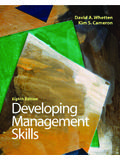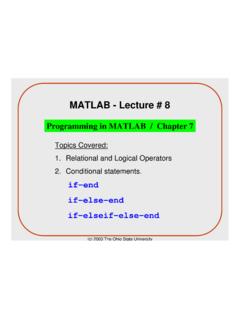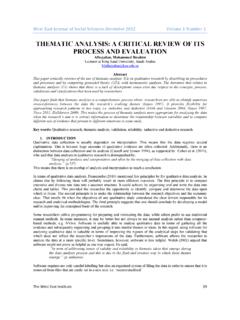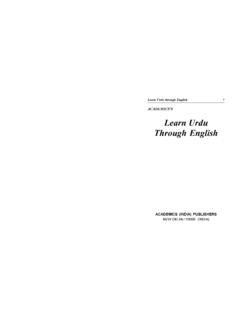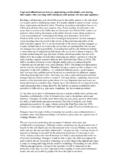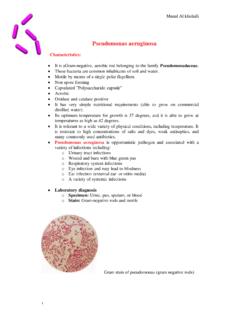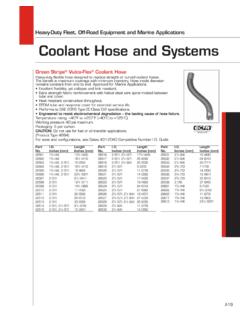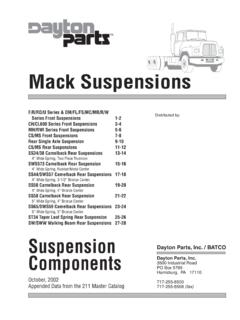Transcription of MAXIMO Student Manual Ver 6 - جامعة الملك سعود
1 LABORATORY Manual MAXIMO Release IE 434 MAINTENANCE ENGINEERING Version 6 Dr. Adel Al-Shayea & Dr. Basel Shadid Prepared by: Eng. Wahyudin P. SyamVersion 6 MAXIMO Rel. 6 IE 434 Prepared by: Wahyudin P. Syam Industrial Eng. - KSU 1 Table of Contents PART 1: Concept and Theory 2 CHAPTER 1: Introduction 3 CHAPTER 2: Organization and Sites 12 CHAPTER 3: Locations 13 CHAPTER 4: Persons, Craft, and Labor 20 CHAPTER 5: Inventory Item (Spare Parts) 26 CHAPTER 6: Assets 32 CHAPTER 7: Job Plans 38 CHAPTER 8: Work Order and Preventive Maintenance 40 PART 2: Practice and Lab Session 48 LAB SESSION 1: Setting Up Organization and Sites 49 LAB SESSION 2: Setting up Locations 55 LAB SESSION 3: Setting up Person, Craft, and Labor 62 LAB SESSION 4: Setting up Inventory (Spare Parts) 73 LAB SESSION 5: Setting up Assets 80 LAB SESSION 6: Creating Job Plans 85 LAB SESSION 7: Creating Work Order for PM 92 MAXIMO IE 434 Prepared by: Wahyudin P.
2 Syam Industrial Eng. - KSU 2 Chapter 1: Introduction MAXIMO 3 Chapter 1: Introduction MAXIMO is Strategic Asset Management (SAM) software that manages all strategic asset to increase utilization and reduce operation cost so that the profit of the company is increased as well. 1. Strategic Asset: Strategic assets are those assets that are directly or closely associated with revenue generation or that are critical to the mission of the organization. They include the following types of assets: Tangible Fixed Physical Capital For example, manufacturing companies depend on assets' uptime to meet production goals; for them, plant floor machinery is clearly strategic. Hotels hospitals, and airports require trouble-free facilities to deliver the quality of' service their customers and users expect.
3 Public transit and over-the-road transport companies depend on the reliability of their fleets to move people or goods. Financial services companies rely heavily on computer systems to manage transactions and maintain positive customer relationships that drive their business. All of these are strategic assets. 2. What Is SAM? Manages and optimizes the business processes related to fixed, physical, or capital assets that have a direct and significant impact on achieving corporate objectives. Takes an enterprise-wide view of asset performance and the tools required to drive maximum return on asset investment. Drives corporate performance by extracting greater lifetime value from asset investment. Chapter 1: Introduction MAXIMO 4 3. Four SAM Categories: SAM is focused on four broad categories of fixed, physical, and capital assets: Production, Facilities, Fleet, and IT.
4 Asset Categories: Asset Category Description Production Production assets are generally understood to be those involved in discrete or process manufacturing. This includes, for example, robots on the assembly line at an automobile plant, or the steppers used in computer chip manufacturing. However, the definition of production assets is considerably broader. In the utility industry, for example, production assets are turbines and compressors used for power generation; they also include the transmission and distribution assets that deliver output to end users. In the telecommunications industry, the antennas and microwave towers involved in producing and delivering output to customers are also production assets. Facilities Facilities assets include types of buildings, from corporate headquarters, casinos ( , MGM Grand), and museums ( , the Louvre), to stadiums, shipyards, and passenger terminals ( , Zurich Airport).
5 Maintaining these facilities can involve mechanical, HVAC, and electrical systems, as well as landscaping and parking lots. There are also many specialized facilities, such as clean rooms, surgical theaters, laboratories, and satellite ground stations. Fleet Fleet assets are often over-the-road vehicles such as cars and trucks; however, this category also includes airborne fleets (aircraft), rolling stock (rail cars), and marine assets (passenger boats and ships). Companies might have mission- critical fleet assets around which the core of their business is built; for example, a commercial shipping company depends on its trucks and aircraft. Vehicles for a public transit organization like Long Island Railroad also fall into this first category. Additionally, companies might have enterprise fleet assets that are important to the overall function of an operation but do not directly generate revenue, such as employee shuttle buses, repair trucks, or forklifts.
6 IT The operations of most companies today are critically dependent on the organization's IT infrastructure. On the hardware side this includes servers, desktops, laptops, cell phones, PDAs, hubs/routers, and telecom assets. Software is equally important in day-to-day operations, and ensuring software license compliance is an important part of IT asset management. Chapter 1: Introduction MAXIMO 5 4. Why SAM? With pressure mounting to improve financial performance in the face of a difficult economic climate, companies are looking in all directions to increase revenue, reduce costs, and mitigate risks. SAM is a more sophisticated and comprehensive approach to extracting greater lifetime value from asset investment; it is one relatively unexplored avenue that offers an opportunity for significant gains.
7 5. Objectives of Strategic Asset Management There are five main objectives of asset management: Investment Minimize funds invested to achieve business objectives. Ownership cost Minimize cost to ensure a required level of performance. Commercial return Maximize the value that the assets add to the business. Strategic value Optimize the market value and flexibility of the asset base. SAM and Maintenance, and Asset Performance Risk Manage commercial, health, and environmental risks. 6. Some key performance indicators (KPIs) of SAM are: Return on asset (ROA) Overall equipment effectiveness (OEE) Expenditure/capital replacement value Maintenance cost per unit of output Mean time between failures (MTBF) Mean time to repair (MTTR) Mean time between work orders (MTBWO) Maintenance cost/estimated replacement cost (ERV) Chapter 1: Introduction MAXIMO 6 8.
8 World-Class Benchmarks: Some world-class benchmarks and performance goals are: . Maintenance costs Total maintenance costs/total manufacturing costs <~10% Planned maintenance Planned maintenance/total maintenance >90% Maintenance overtime Maintenance overtime/total maintenance time <5% Maintenance rework Work orders reworked/total work orders 0% Inventory turns Turns ratio of spare parts > 3 Training Maintenance workers receiving > 40 hours/year > 90% Safety Injuries per 200,000 maintenance hours < 2 9. KPIs Do Not Give Answers While KPIs do not deliver magic answers, they will tell you what is happening in your organization. The excerpt below, written in response to an article on asset breakdowns, illustrates this point. "A better picture would give, not simply the number of breakdowns, but the consequences of those breakdowns, such as: The financial value lost due to breakdowns (whether by lost production, lost customers, or other means) The number of injuries, labor-hours lost, and fatalities, caused by breakdowns The number of environmental infractions caused by breakdowns I can illustrate the importance of this by giving a catastrophic example.
9 If you only had two breakdowns in the last three years, but if because of these breakdowns your plant is on the verge of being closed then you should be examining your PM program, even though you "only had two breakdowns in three years." Chapter 1: Introduction MAXIMO 7 Simply noting that the breakdowns are taking place is not likely to provide the information needed to prevent them. However, noting both the breakdowns and their consequences might provide the information you need to decide whether you need to conduct a more detailed review." Dana Netheron, Jan. 2003 - Plant Maintenance Web site 10. General Steps for MAXIMO : STEP 1 Creating Organization and Sites (CH 2)STEP 2 Creating Locations (CH 3)STEP 3 Entering Person, Craft, & Labor Records (CH 4)STEP 4 Setting Up Inventory Items (Spare Parts) (CH 5)STEP 5 Entering Asset Records (CH 6)STEP 6 Job Plans(CH 7)STEP 7 Work Order for PM(CH 8) Chapter 1: Introduction MAXIMO 8 11.
10 All Modules (applications) in MAXIMO are working together (Maintenance Activity): Chapter 1: Introduction MAXIMO 9 MAXIMO (version 6 above): is a web based application in which the application is installed in a server and client can access the MAXIMO application via web browser (IE 7 below for MAXIMO ver. 6). 12. MAXIMO Screen Shoot: a. MAXIMO Login Screen: Chapter 1: Introduction MAXIMO 10 b. MAXIMO Main Screen and Application: Chapter 1: Introduction MAXIMO 11 c. MAXIMO Applications: Chapter 2: Organization and Sites MAXIMO 12 Chapter 2: Organization and Sites Organization is a group of sites that have similar business process. Schematic view of Organization and sites: Example 1: Example 2: Chapter 3: Locations MAXIMO 13 Chapter 3: Locations 1.
